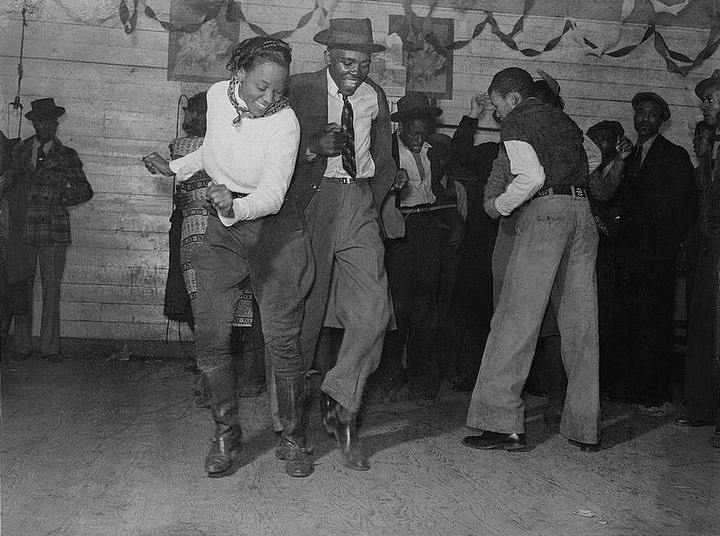
New York City’s rich, culture-steeped history is matched in smaller doses by some of its oldest, most vibrant neighborhoods. Of these, Harlem stands out for its significance as a cultural hub that has fundamentally shaped America’s musical identity through art, song and dance.
As far as dance goes, Harlem has seen (and created) an array of iconic moves throughout the years. Though the recently-viral “Harlem Shake” may come to mind immediately, dig a little deeper and you’ll find Harlem dance is much more than a meme. In this neighborhood, which remains a hotspot to this day, a range of known styles were originated and popularized. Here’s what you should know about Harlem’s “dance dance evolution,” the men and women who led the way, and the venues where it all went down.
How it Started
In 1905, African-American residents began to arrive in Harlem in great numbers. This was a result of the Great Migration, when as many as 5 million African-Americans left the rural South for uncertain futures in the Northeast, Midwest, and West. Those that settled in Harlem were destined to kick off an entire movement: The Harlem Renaissance.
By 1920, Harlem had become a center of black cultural life, with influence from aforementioned migrants as well as immigrants from the Caribbean. This mix of experience and culture ignited an explosion that represented a rebirth for African-American arts.
Arts of all types proliferated during the Harlem Renaissance, and dance was a big one. In the clubs, dance styles including the Charleston, the Lindy Hop, and the Jitterbug sprang to legendary proportions. These dance moves, along with the enduring power of jazz, are staples of the 1920s celebrated to this day. They quickly spread from America to Europe, and have influenced countless new forms of music and dance in decades since.
Where it Happened
Though other city centers like Atlanta and Philadelphia experienced a cultural explosion during the early 20th century, Harlem was an epicenter where people of all colors and walks of life rubbed shoulders in spite of rampant racial discrimination.
Dance was one way prejudice was bridged the time’s hostile climate, if only temporarily. At the Savoy Ballroom (now Savoy Park Apartments), blacks and whites put their differences aside to swing dance, with rhythmic ability as the single qualification to participate. The Lindy Hop was crafted, honed, and perfected here.
Broadway also became a space for Harlem dance to reach the mainstream. The 1921 all-black musical “Shuffle Along” ignited interest in African American Dance, opening up more opportunities for black performers. Shortly after, the 1923 hit Running Wild cemented the Charleston as the dance of the decade in America and beyond.
Other notable venues and dance halls located in Harlem include the Alhambra Ballroom and Small’s Paradise. Decades later, Harlem venues like Park Palace and Havana San Juan became hubs for the community’s growing hispanic population to practice salsa and other styles of Latin dance.
In 1969, the Dance Theater of Harlem (DTH) would be founded as the world’s first “permanent, professional, academy-rooted, predominantly black ballet troupe.” The DTH debunked opinions that African-Americans could not dance classical ballet, while also employing African-inspired techniques for more experimental performances.
Notable Figures
Throughout the years, a number of great dancers and choreographers have come from Harlem or performed their during their careers. In the 1920s, Florence Miller was a “jazz queen” of Harlem who went on to star in Broadway shows including “Shuffle Along,” “Plantation Revue,” and “Blackbirds.”
In the 1930s, Frankie Manning was a Savoy Ballroom frequent who eventually became a dancer in the elite and prestigious "Kat's Corner." At Savoy, Manning performed the first aerial in a swing dance competition against George “Shorty” Snowden, who coined the term Lindy Hop. Both Manning and Snowden are considered among the dance move’s founders.
Around the same time, Buddy Bradley emerged as a successful dancer and choreographer on Broadway and the West End. Before making his big break, Buddy was one of the best young dancers in Harlem. After leaving New York for London, there were rumors that he left because the Mafia owner of Harlem’s Cotton Club didn’t appreciate when Buddy taught his girlfriend to dance.
Arthur Mitchell was born around this time, and grew up on Harlem’s streets. He became the second African American with the New York City Ballet in 1955, and founded the Dance Theater of Harlem in 1969.
Contemporary Dance in Harlem
With time, jazz gave way to to hip hop, the most recent musical genre with roots in Harlem to gain mainstream prominence. Though Hip Hop originated in the South Bronx a quarter of a century ago, sites like the former Harlem World Entertainment Complex on 116th Street often hosted rhyme battle face offs between rival rap crews.
And as for the Harlem Shake? The move that rose to virality does have its roots in Harlem, too, though barely. According to MSNBC, it began in the 1980s in Harlem’s Rucker Park, where the late Albert Boyce coined the move during halftime at basketball games. The move was co-opted by dancer crews and rappers, though residents have noted that the “Harlem Shake” craze bears little resemblance to the original.
Then again, rock and roll bears little resemblance to jazz, though it owes its existence to it— as do so many other types of music. Dance, like all art forms, mutates and transforms over time. So next time you’re out dancing, consider that even if you don’t realize it, some of your moves owe their influence to Harlem. Let’s continue to celebrate this literal movement, one shake at a time.
